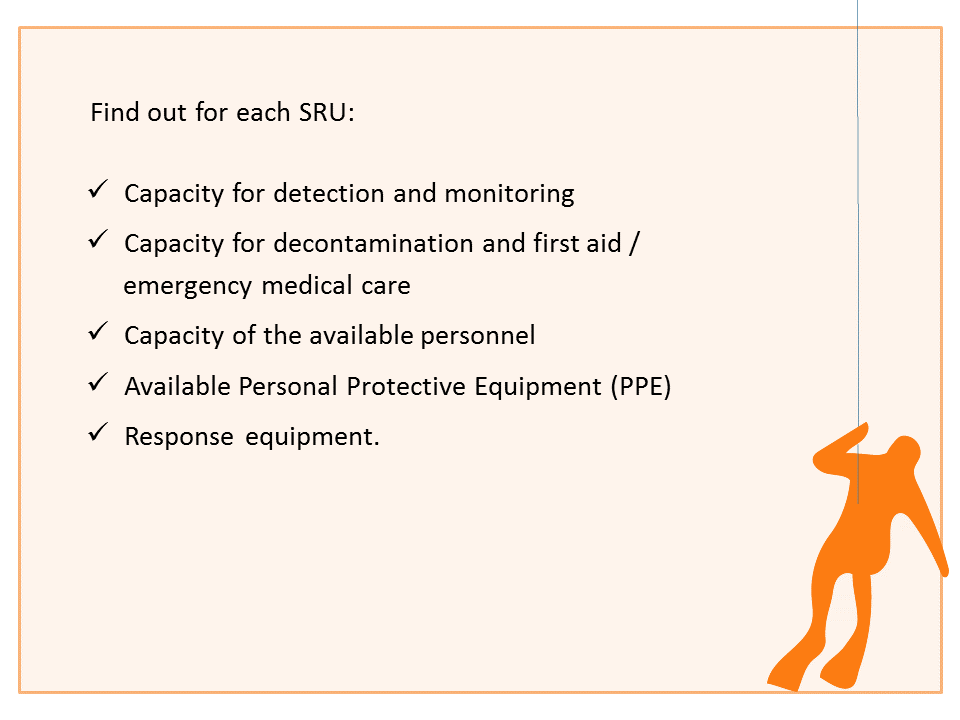Introduction, Resources


Introduction
For RCC (as well as for the SRUs, of course) arrival of the units to the scene is one of the most important moments. It is highly likely that RCC does not have enough information to assess adequately the situation, so the information provided on-scene by the SRU is crucial. However, it is also RCCs duty to ensure that SRUs will not put themselves in to unnecessary risk. Due to the complex nature of HNS incidents, it is likely that international help is needed, so RCC must ask for units with proper capabilities.
Resources
When dispatched SRUs are arriving to the scene, RCC must assign tasks to them that correspond with their capabilities. Therefore, the first step for the RCC, even before the units arrive at the scene, would be to map the capabilities of each unit. This can be done using resource catalogues, if available, or by plainly asking the units via radio. RCC must monitor that units without proper capability or equipment do not enter the hot zone.

Once this information is available, RCC can task units according to their capabilities. It may be necessary to stress the importance of staying out of the hot zone for the SRUs without proper capabilities. Especially, if there are already people in the water etc.
